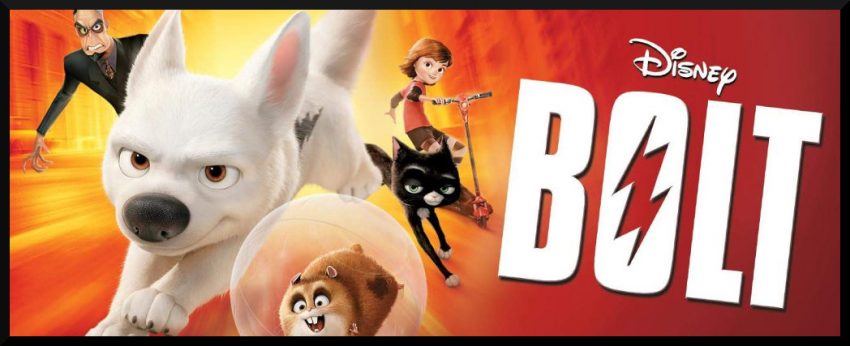Update 2016-02-21: I’ll add Disney-Pixar’s Inside Out to the list of clever, thoughtful and genuinely funny children’s movies like Up, Bolt and Wall-E. It’s up there with Wall-E, I think.
The Power of Children’s Movies
Having the movie network I’m often able to catch some high quality films. In recent memory I’ve been impressed with Up, Bolt and Wall-E. I’m impressed with these movies, not only because they target children and also are quite watchable by adults, but I’m impressed with their ability to touch on sensitive subjects in a straightforward yet mature, dare I say witty, manner.
Up deals with an old man who loses his wife and now spends his senior days in a very poor, sad routine. At one point during the early stages of the film a series of flashbacks to his life with his wife is presented. Through these quick flashbacks we learn of his favourite hero as a child, of how he met his wife as a child, of their romance, of their dreams to move away to live by a tall waterfall, of their discovery that they could not have children, of their shattered dreams as time after time their savings are sapped by other necessities, of his wife’s death and the death of their dream.
All of these things are presented so visually and aurally and with such care of delivery that I have no doubt children grasp the full meaning of those events. The children are learning about love, about loss, about heart break and about loneliness, all in a family safe way.
Bolt is another film that manages to bridge the divide between the children and adults that are watching. In the film, a dog who thinks he has superpowers, because of his role in a television show, gets tossed out into the real world and meets up with a stray cat, some street-wise pidgeons, and a hamster with no fear.
Mittens, the stray cat, is something of a close friend to Bolt and you can see a little bit of attraction between them which I’m sure does not go unnoticed by the kids. The fact that it’s attraction between a dog and a cat, two very different creatures and personalities, is just another cleverly written in lesson for children.
Bolt’s relationship with the wily hamster, Rhino, is also a good model for kids, and adults as well, to allow friends within your personal space that challenge your comfort zones. There’s no end to the adventure Rhino seeks. His loyalty and lack of fear, even in the knowledge of his mortality, is a shame to Bolt but also a good lesson for him.
In the climactic scenes of the movies, the hamster is seen to roll his ball to hold up a falling door. As the door threatens to break his plastic ball, he stretches his arms as if to hold up the door, his arms of course too short to even reach the top of his ball, and declares “Today is a good day to die!”
And then there’s Wall-E. Wall-E is a story of the last functioning garbage cleanup robot on a long since uninhabited and uninhabitable garbage pile that happens to be earth. Wall-E is this robot. Eve is the robot sent to earth to look for signs of life. What ensues is one of the most brilliantly portrayed romances conveying human thoughts and emotions, of excitement, happiness, fear, despair and more, that I have ever seen in any movie. That it is expressed through robots is an achievement in itself. The film, while having a grand theme of ecological responsibility, carries its lesser themes, of loneliness, friendship, sadness and love, perhaps even better in its delivery than its main theme.
All of these films have a few critical things in common. They are all targeted towards children. They are all intelligent films able to be enjoyed by adults. And each film touches on a number of basic life lessons, whether that be friends, adventure, realizing your limitations, dreams, inability to have children, or loss of a spouse, or one of the many other subtle yet very well delivered sub-themes.
These lesser themes are sometimes no less important than the greater themes. Often times, the lesser themes are more personal as is the case in Wall-E in which a personal relationship is the undertone to the greater theme of ecological responsibility. Also, quite arguably, while these sweeping greater themes are of great benefit to children, often times the greatest value of story telling are the personal lessons.
Story telling on the level of Up, Bolt and Wall-E go beyond mediocre, tried and true Hollywood fantasy. They cross boundaries. They reach more than just the lowest common denominator. In doing these things they become some of the best, most able, most apt teachers, not just to children but to adults as well, of the things we might shy away from because we don’t know how to speak about them with due sensitivity.
